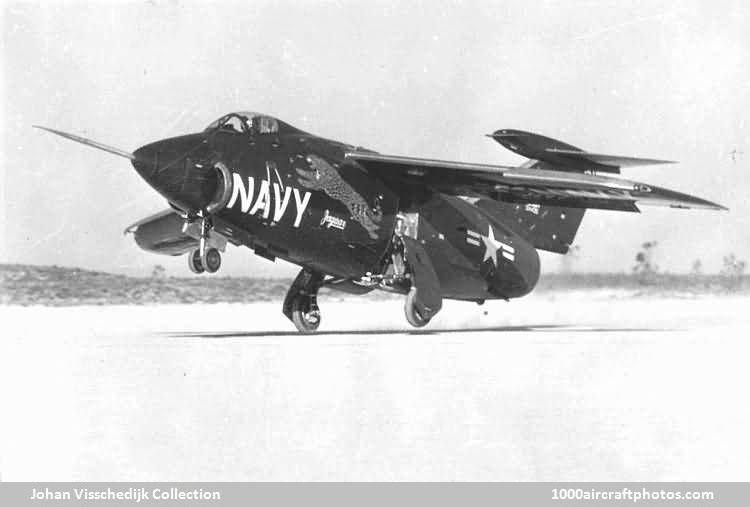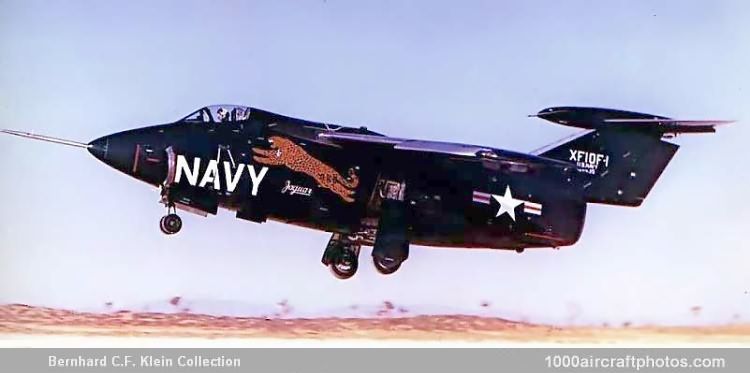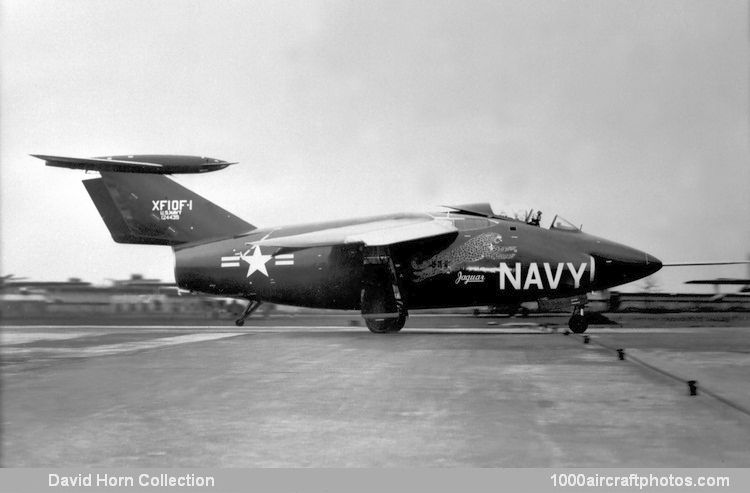08/15/2008. Remarks by
Johan Visschedijk: "The world's first variable-sweep combat aircraft designed for actual production, the XF10F-1 was to be a transonic single-seat shipboard fighter with an internal armament of four 0.787 in (20 mm) cannon and an external load of up to 4,000 lb (1,814 kg). The wings were fitted with full-span slats and an 80% Fowler flaps; the sweepback angle of the wings could be varied hydraulically between 13.5 and 42.5°. The intended power plant was the newly developed 7,400 lb (3,357 kg) st Westinghouse XJ40-WE-8 turbojet, with afterburner delivering 10,900 lb (4,944 kg) st, however, a 6,800 lb (3,084 kg) st Westinghouse J40-WE-6 turbojet was fitted instead.
(
Bernhard Klein Memorial Collection)
On April 16, 1952, the XF10F-1 was air-freighted aboard a C-124 Globemaster from Bethpage, New York to Edwards AFB, California, where it made its first flight on May 19, with Grumman's test pilot Corky Meyer at the controls. Later the XJ40-WE-8 was fitted, although the afterburner was never supplied. In the un-swept configuration the aircraft performed well, the swept configuration, however, showed stability and longitudinal control problems that were not solved during the 32 flights the aircraft made by April 1, 1953.
(
David Horn Collection)
The Navy cancelled the XJ40-WE-8 in March 1953, and subsequently all work on the XF10F-1 was terminated, the unfinished second prototype (BuNo. 124436) was abandoned and the orders for 12 pre-production and 161 production aircraft were cancelled as well. The sole prototype ended up as a gunnery target."



